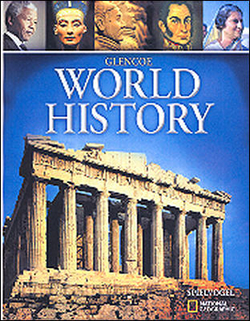Glencoe World History © 2010Chapter 25:
Nationalism Around the WorldChapter OverviewsNationalism was a major force in the Middle East, Africa, Asia, and Latin America after World War I. In China, the Nationalists forced the Communists into retreat and formed a republic. An expansionist military took power in Japan. Economic crises led to military dictatorships throughout Latin America. Section 1 Nationalism in the Middle East
During World War I the Ottomans practiced genocide with its slaughter of Armenians seeking independence. At the end of the war, the Ottoman Empire collapsed. Nationalist leaders established the independent states of Turkey, Iran, and Saudi Arabia. Britain and France withdrew their promised support for Arab nationalists and set up British mandates in Iraq, Palestine, and Jordan, and French mandates in Lebanon and Syria. Saudi Arabia had vast supplies of newly discovered oil and suddenly attracted Western oil companies that would bring the kingdom untold wealth. Palestine became a site of conflict beginning with the British Balfour Declaration during World War I, which supported Palestine as the site for a Jewish homeland. Tensions between Jews and Muslims worsened in the 1930s as Jewish immigrants fleeing Nazi persecution immigrated to the Palestine mandate. Section 2 Nationalism in Africa and Asia
After World War I, Germany lost its African colonies to Britain and France. Violent suppression and the slow pace of reform in the colonies led many Africans to agitate for independence. Two African Americans, W.E.B. Du Bois and Marcus Garvey, were influential in building African cultural awareness and Pan-Africanism. Jomo Kenyatta of Kenya and Leopold Senghor of Senegal worked to end colonial rule. The Communist International helped build Communist parties in China and Southeast Asia. Mohandas Gandhi built a large movement for Indian independence through nonviolence. Indian Muslims threatened by the largely Hindu Indian National Congress called for a separate Muslim state. Rapid industrialization in Japan led to support for territorial expansion to improve Japan's access to raw materials and markets. After a period of pacifism prompted in part by pressure from the United States, Japan conquered Manchuria, and the military took control of the government. Section 3 Revolutionary Chaos in China
As central authority collapsed in China, rival Nationalist and Communist Party forces briefly joined ranks to drive imperial powers out of China. The two groups split after a Nationalist massacre of Communists in Shanghai. The Nationalists, led by Chiang Kai-shek, founded a new Chinese republic in 1928. The Communists, led by Mao Zedong, went into hiding and by 1931 most party leaders were forced to flee Shanghai for southern China. Mao's plans were for a revolution led by peasants. In 1933 Mao's forces used guerrilla tactics against Nationalist forces. They then began the Long March to the last surviving Communist base; at the end only one-tenth of his troops remained. Chiang had plans for land reform and a Western-style constitutional government. To make Western ideas palatable, he blended them with Confucian themes. Although he did achieve some meaningful reforms, Chiang's support came mainly from the rural gentry and the urban middle class; his reforms did little to redistribute wealth. His governments was also repressive. Section 4 Nationalism in Latin America
American investors directly controlled many Latin American industries beginning in the 1920s. Latin American nationalists claimed that U.S. investments propped up the regions' dictators. The Great Depression weakened regional economies but led to the creation of government-run industries and manufacturing because Latin Americans could not afford imported goods. Economic crises and instability prompted military leaders to overthrow the elected governments—which were dominated by small elites—and to establish authoritarian regimes or military dictatorships. In Mexico, a single-party state dominated society. The popular Depression-era leader Lázaro Cárdenas nationalized foreign-owned oil companies and redistributed land to Mexican peasants. Artists and writers helped build national identity in many Latin American countries.  | 
















